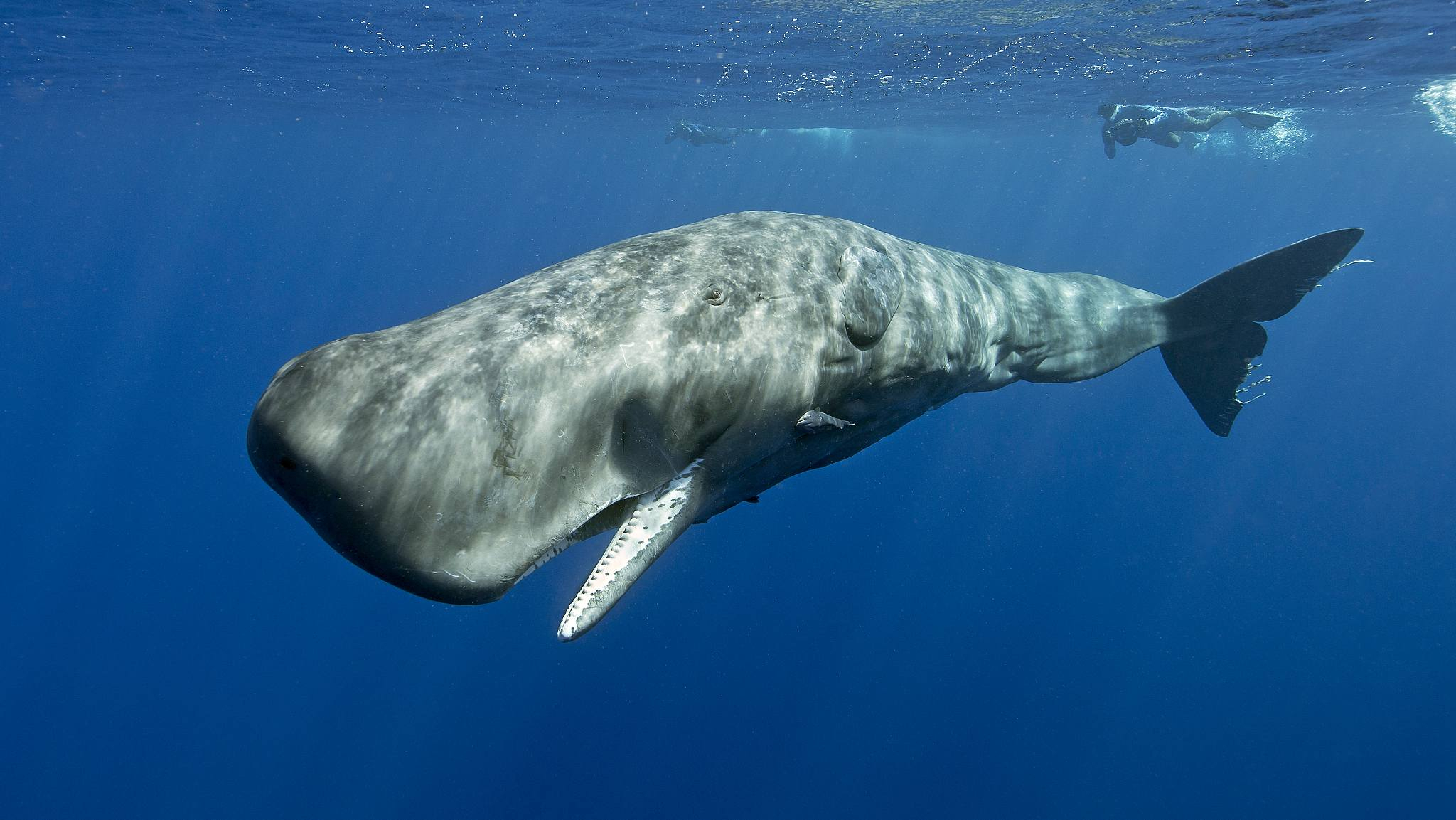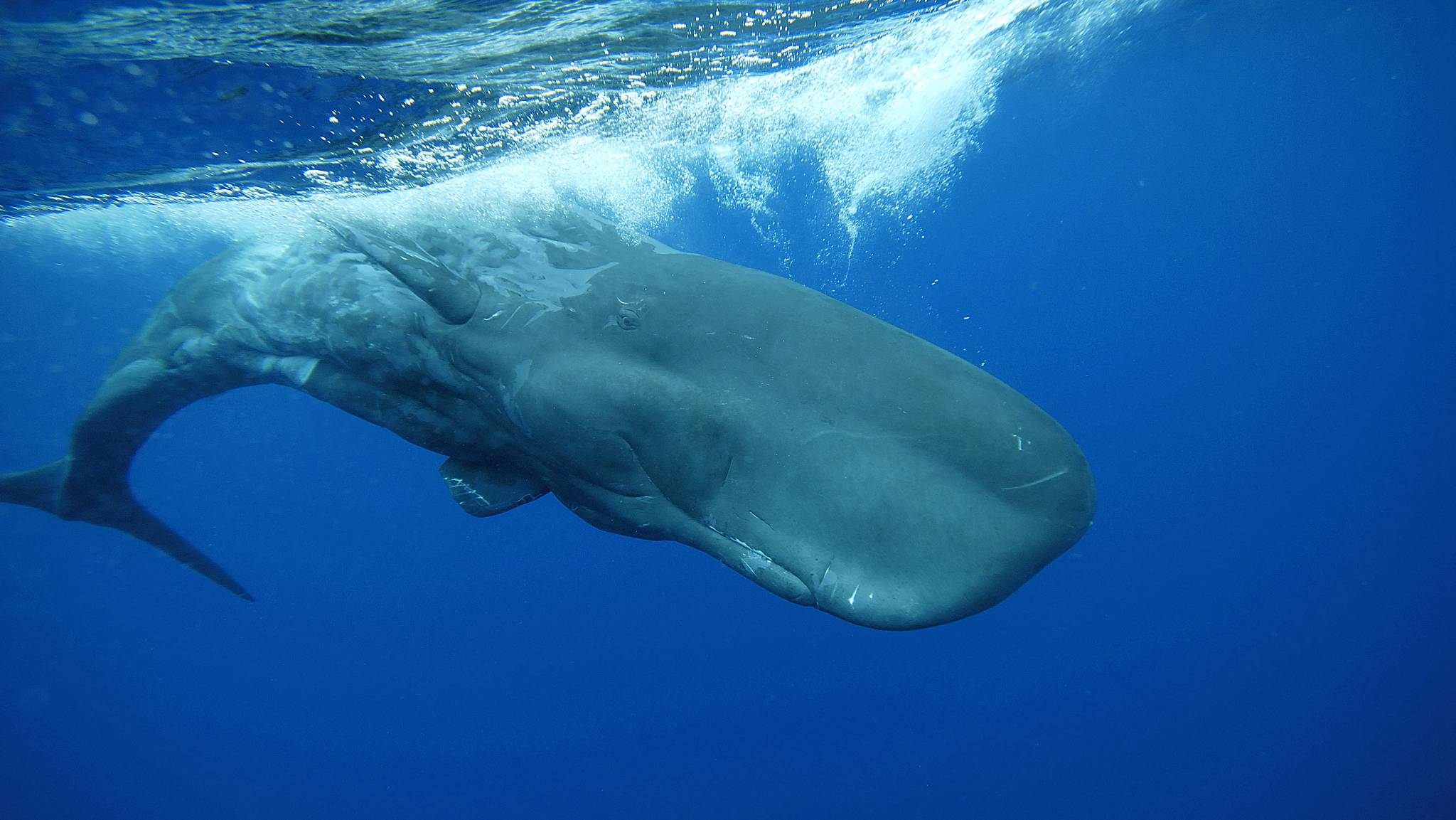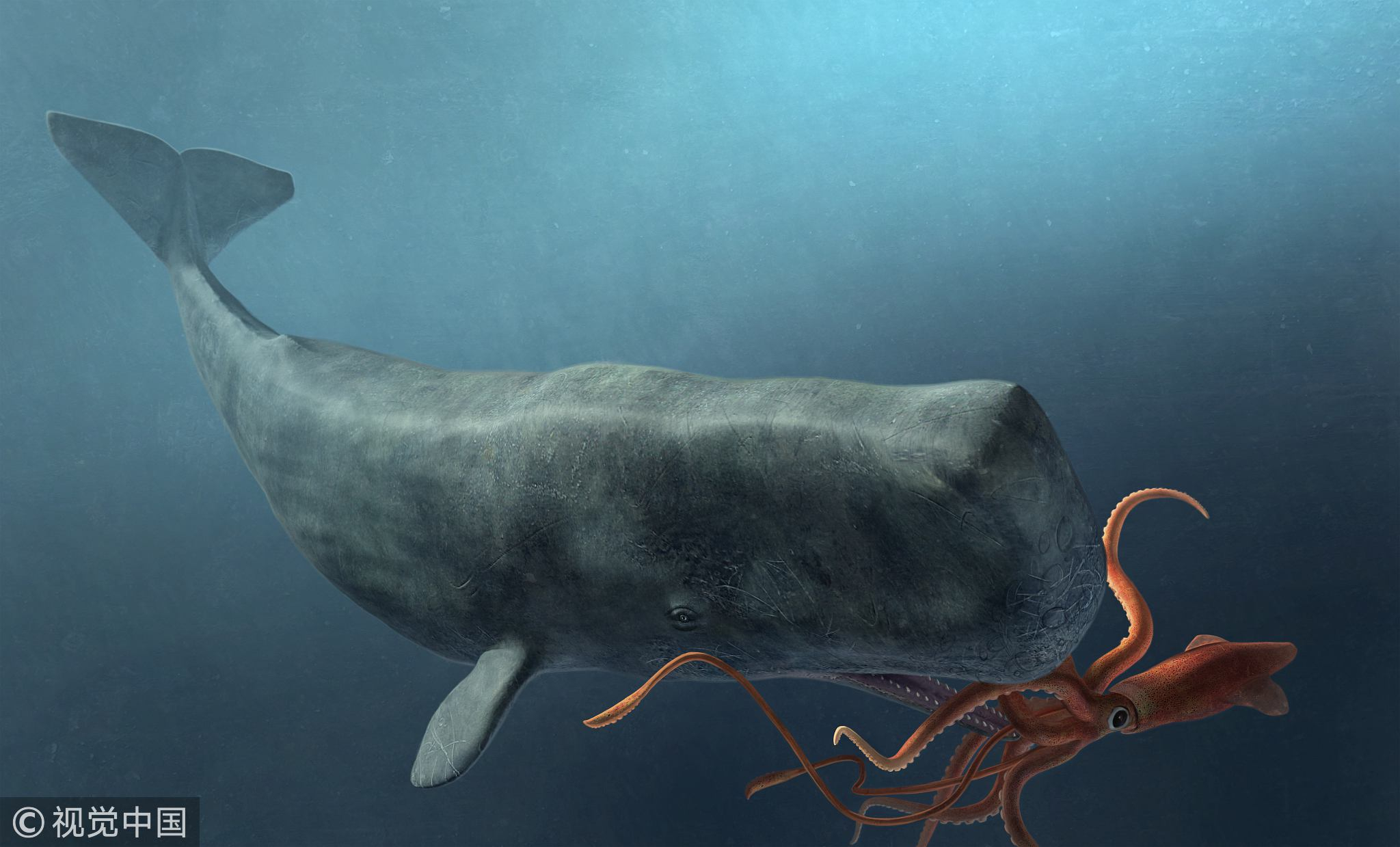
Nature
21:02, 02-Nov-2018
Sperm whales inspire covert underwater communication
Updated
20:31, 05-Nov-2018
By Zhao Ying

A recent study led by researchers at the Tianjin University in north China developed a new method of camouflaged underwater acoustic communication by imitating the clicking sounds of sperm whales.

Sperm whale (Physeter macrocephalus) in the Atlantic Ocean. /VCG Photo
Sperm whale (Physeter macrocephalus) in the Atlantic Ocean. /VCG Photo
Sperm whale, also named cachalot, is a diving star among mammals in the deep sea that has always attracted the attention of scientists around the world.
It can plunge as deep as 2250 meters with its respiratory system that allows it to cope with drastic pressure changes while diving.
As the largest toothed whale, a sperm whale's head accounts for one-third of its length. Inside its signature big head lies a large complex of organs which not only store commonly-known sperm oil, but also generate iconic call pulses for echolocation and communication.

Tail of a sperm whale (Physeter Macrocephalus) diving in the sea. /VCG Photo
Tail of a sperm whale (Physeter Macrocephalus) diving in the sea. /VCG Photo
A sperm whale's call pulses can be divided into four types: usual clicks, creaks, slow clicks, and codas. These sounds are produced when they are searching for food, preying or communicating with each other.
Call pulses produced by sperm whales, like other marine biological signals, have a serious impact on sonar detection performance. Therefore, the enemy's underwater reconnaissance system often regards these biological signals as ocean noise and filters them out.

A sperm whale family swim together while sharing a close bond between them. /VCG Photo
A sperm whale family swim together while sharing a close bond between them. /VCG Photo
In the study led by associate professor Jiang Jiajia at the Tianjin University, scientists manage to conceal digital communication information in the constructed communication frame composed of original sperm whale call pulses, which fakes out the enemy's detecting system.
In order to enhance the security of communication information, the communication frame must imitate sperm whale's call pulses. Therefore, multiple call pulses are collected to construct and design the communication frame.

Digital illustration of sperm whale attacking squid underwater. /VCG Photo
Digital illustration of sperm whale attacking squid underwater. /VCG Photo
This method is not limited to call pulses of sperm whales. Blue whales and dolphins are applicable as well. It can be used in a variety of underwater military communications, such as submarine communications and autonomous underwater vehicle communications.

SITEMAP
Copyright © 2018 CGTN. Beijing ICP prepared NO.16065310-3
Copyright © 2018 CGTN. Beijing ICP prepared NO.16065310-3